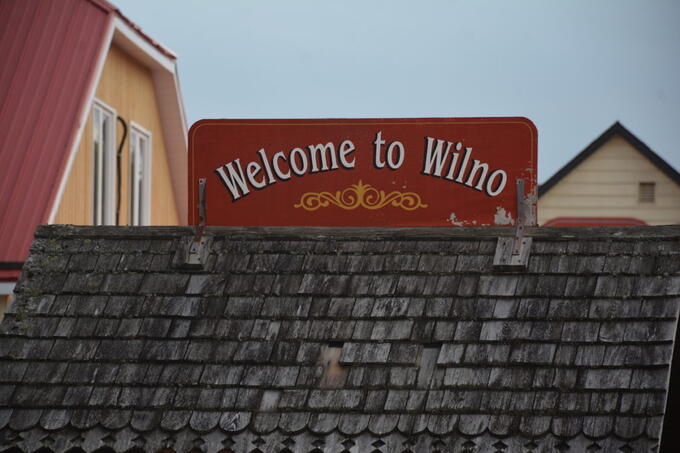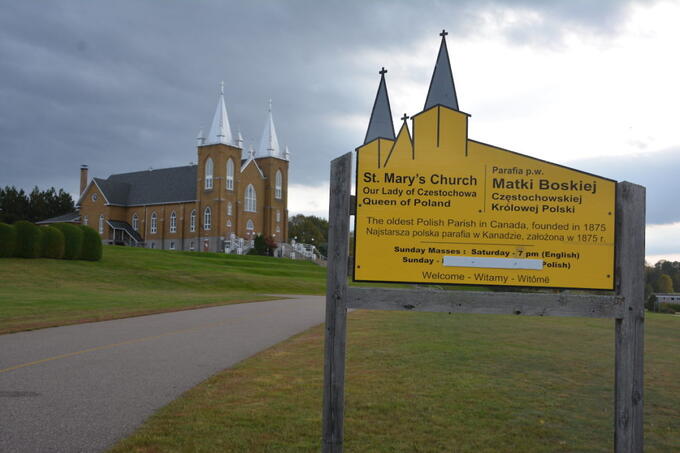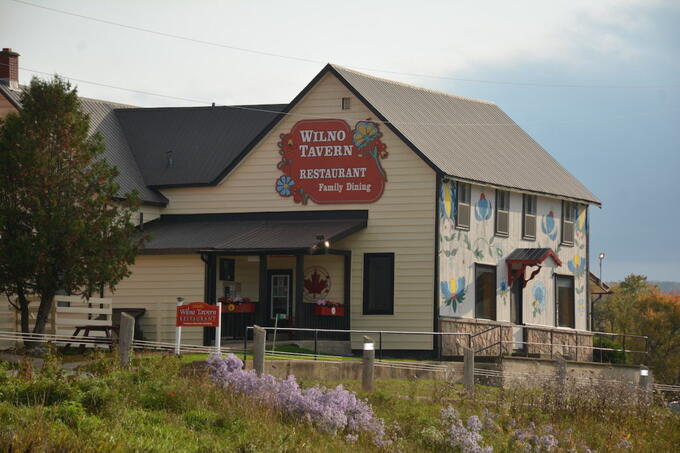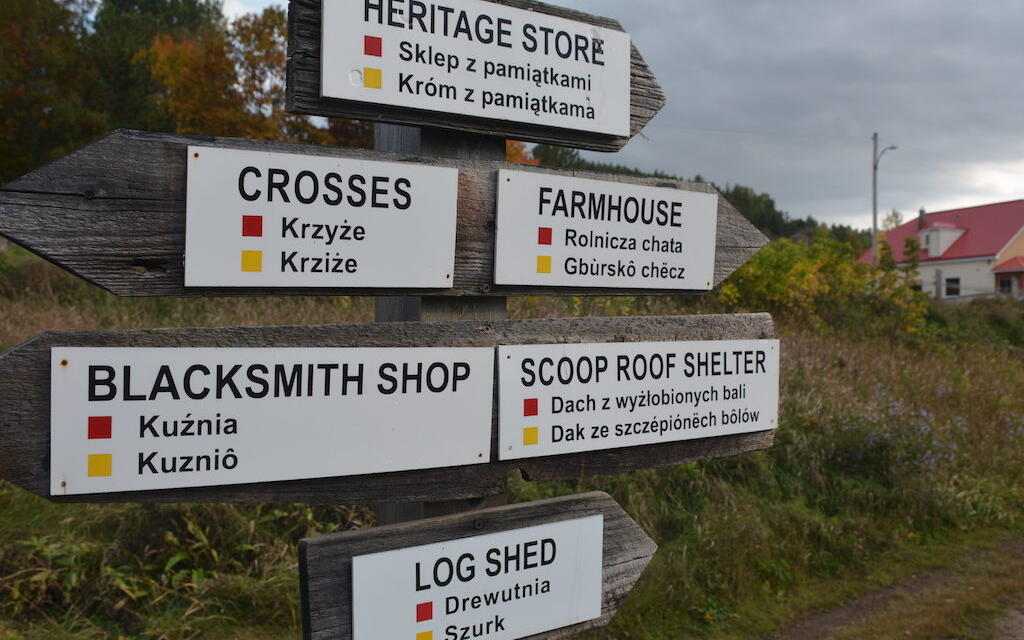Wilno is a land with stories to tell – many stories, in fact.
If the hamlet could talk, it would tell you tales of first settlers, church fires, bustling railway lines, and hockey games played on the outdoor rink. Known as Canada’s first Polish/Kashub settlement, Wilno is the place where settlers from Poland/Kashubia first laid down their roots in 1858.
Families were given 100-acre parcels of land from the government where they miraculously carved a life out of the rocky terrain. This hard life did not deter these settlers; it only made them and their descendants - many of whom still live in Wilno to this day - stronger.

Delve into Polish/Kashub history
Whether you have Polish/Kashub blood flowing through your veins or would simply like to sample the culture, begin your journey at Shrine Hill Lookout just off Highway 60. Although trees have blocked much of the magnificent views, this park makes the perfect pit stop for your exploration. There are onsite washrooms, sheltered picnic tables, and an Ontario Heritage plaque which gives an overview of Canada’s First Polish/Kashub Settlement.
Continue a short ways west on Highway 60. You can’t miss St. Mary’s Church perched high up on a hill.

St. Mary’s is Canada’s oldest Polish parish and was founded in 1875. The original parish burned in the 1930s and the current church was erected.
No matter your religious background, consider venturing inside the church for a visit. St. Mary’s features two religious icons, including a replica statue of Our Lady of Sianowo (Queen of Kashubia) and a picture of Our Lady of Czestochowa (Queen of Poland).
Following your visit, continue winding down the hills of Wilno until you see the famous Wilno Tavern on your left, and Wilno Heritage Park on your right.
A Feast for a Polish/Kashubian King or Queen

No visit to Wilno is complete without a hearty meal at the Wilno Tavern. According to its website, this historic pub has been providing exceptional hospitality to locals and visitors alike for over 100 years.
The menu is a nod to the area’s rich heritage. Mains like handmade cabbage rolls, Polish sausage and jumbo pierogies will give you a taste of the motherland.
Of course, the regular menu featuring delectable burgers, hearty salads, and yes, even dinosaur chicken buddies, brings us back to the Canadian fare that we all know and love.
Regardless what you choose, make sure you head home with a bottle of their homemade Wilno Mustard. Just be prepared to make another trip back when the bottle runs dry.
Venturing into Historic Wilno
Bellies full, take a stroll across the road to Wilno Heritage Park. Managed completely by a dedicated group of volunteers, many of whom are direct descendent of Polish/Kashub settlers, this park is a labour of love.
The open air museum doubles as the grounds for a family reunion of sorts, as descendants gather on the first Saturday of May for the Polish/Kashub Day Festival. This event attracts locals and visitors alike with music, dancing and, best of all, traditional Polish food.
It’s located along the old railway, which was originally owned by Canadian National Railways. At one point in history, this was the busiest railway route in all of Canada. A heritage sign in the park tells more of its history.
As you make your way through this open air museum, look for the family names on the stones as you walk by; these are the names of the settlers that made this area their home many years ago.
You will notice a number of buildings on site, including the log cabin museum where you can find an array of history books on Wilno and its people. A log shed display featuring a painting of an intricate Kashubian design exhibits the first Polish schools, post office and general store. Tour the traditional log farmhouse which was relocated to the grounds in 2006. It features typical Polish home furnishings and transports you back to the days of our ancestors.
Take in the three crosses on-site, which are an ode to the traditional crosses dotting the backroads of Wilno.
If Time Permits
There’s so much to do in Wilno that it’s hard to pack it all in one day. But if you find the time, consider venturing up to St. Stanislaus Pioneer Cemetery on Church Street. This cemetery proves to be a humbling reminder of the sacrifices our forefathers made for a better life. Please be careful and respectful of where you walk in this cemetery.
If you’d prefer a scenic hike, consider heading down Opeongo Road and tour the Opeongo Heritage Trail. This is exactly where the first settlers, including those of Kashub, Polish, Irish and German backgrounds, were given plots of land to develop when they first arrived here in Canada.
Wilno is also known for its rich arts culture. Visit the Wilno Craft Gallery to peruse the one-of-a-kind items by the many talented local artists.
After a visit to this historically-rich land, you will come to understand why the town’s unofficial motto is: “What you don’t know, you will know, when you visit Wilno.”

